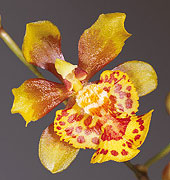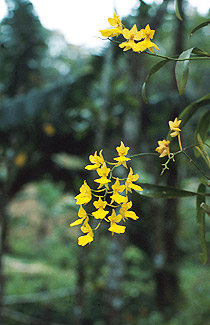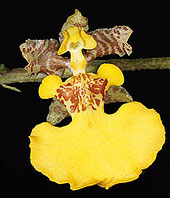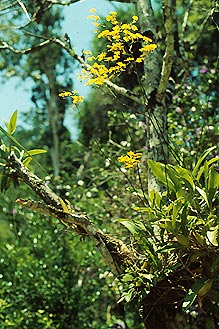Carlos Eduardo
de Britto Pereira has been studying the genus Oncidium for 15 years
and based on those researches, he concluded many interesting things about
synonyms and doubtful occurrences in our country.
He considers that a study of the species should be done based in three
procedures:
first, analyze the original material of description and all synonyms,
second, analyze all material classified in herbarium, specially the material-type
and,
finally, examine many alive material, comes from different habitats.
This is the way he took to study the genus Oncidium in Brazil:
exhaustive analyze of populations included those in their habitats, visits
to herbariums to analyze the classified material, mainly the type and
descriptions. Thus, he could understand some controversial points about
this genus.
His opinion is a resultant of a serious study which aim is a major knowledge
and in proportion that this knowledge progresses, the opinions and the
focus about the same point of view can change as this evolution provokes
a more extensive understanding and a revision about what has already been
studied. In his opinion, he should study much more to do his book.
Read those considerations and understand why he can affirm certain things
and goes on in doubt about some others, although he says that it is his
interpretation which is not necessary infallible.
Do not miss the interview presented in the virtual magazine Orchid News
nº 10. |










